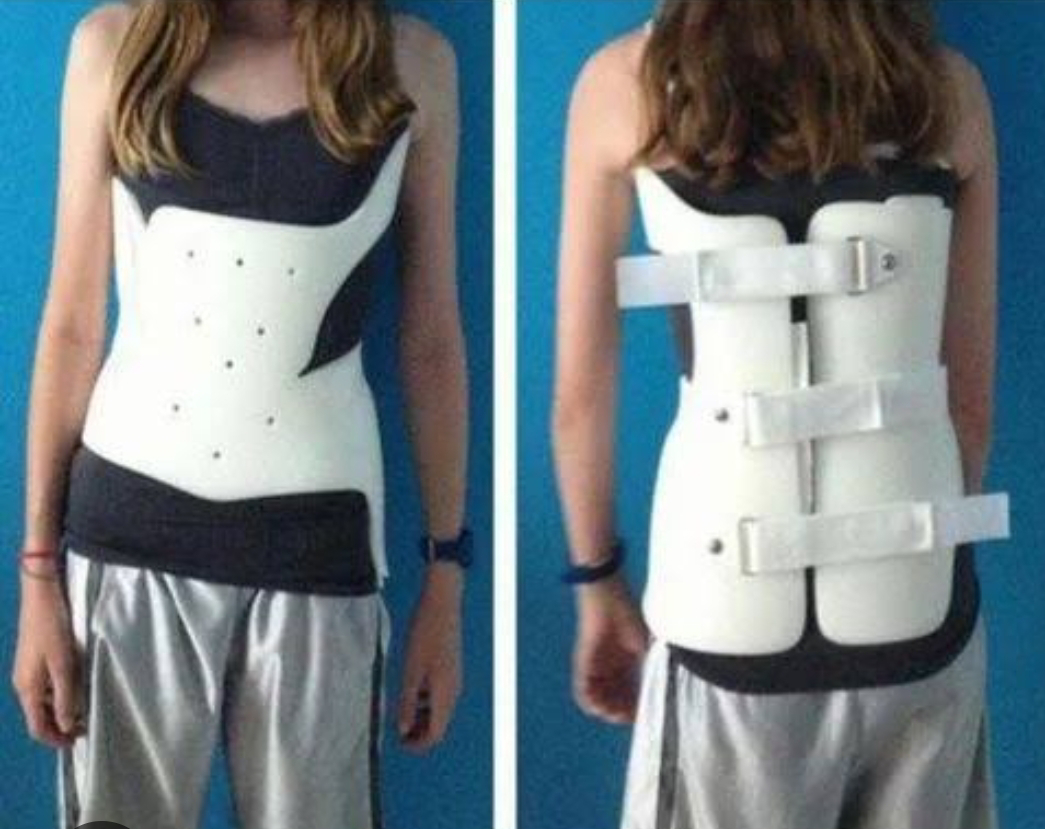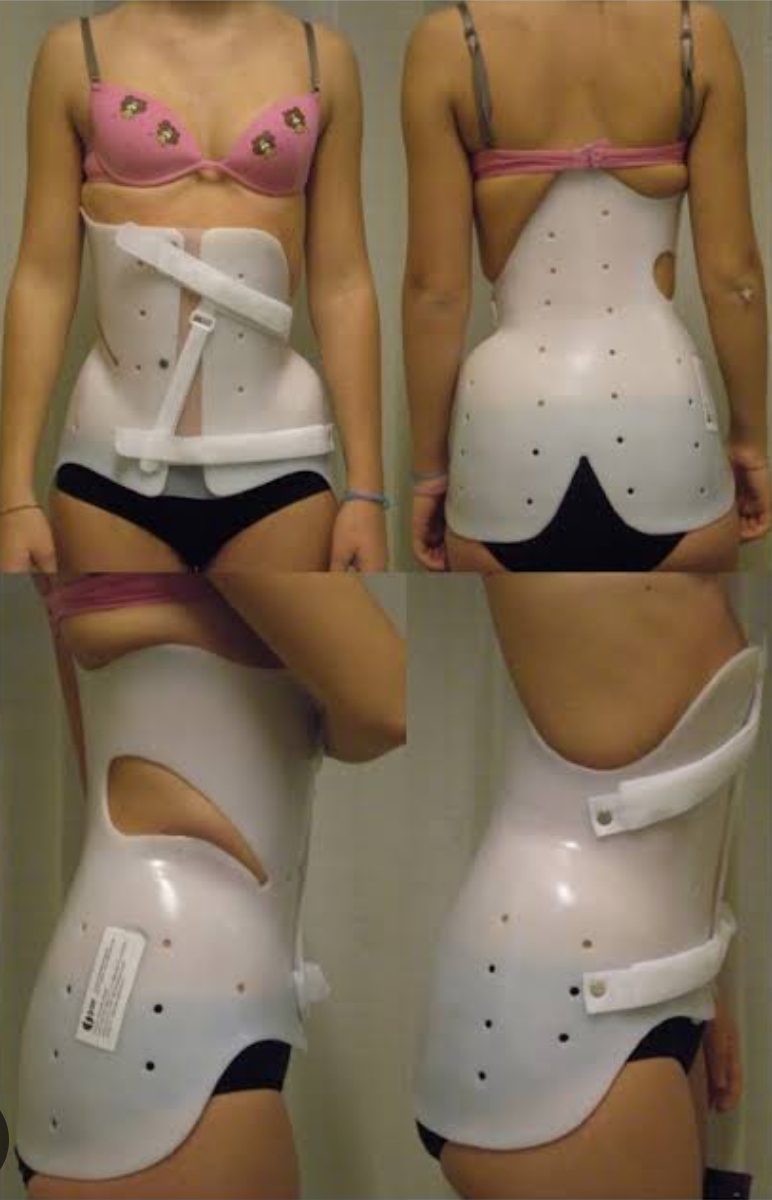Scoliosis, a curvature of the spine, can cause discomfort and impact posture. While I’m not a doctor, I can share some exercises that may help strengthen your core muscles and improve your spine’s positioning. Remember to consult a healthcare professional before starting any exercise regimen. Here are some exercises to consider:
Pelvic Tilts:
- Lie on your back on the floor or an exercise mat.
- Activate your core and butt muscles to flatten your back on the floor, tilting your pelvis slightly forward.
- Hold the position for five seconds.
- Repeat this exercise ten times, twice a day, to build up your lower back muscles.
Sitting Rotation Stretch:
- Sit on the floor or an exercise mat.
- Cross your right leg over the left, placing the sole of the right leg on the floor.
- Place your right arm behind you for support.
- Twist your torso toward the right leg.
- Extend your left arm so the elbow presses against the knee, deepening the stretch.
- Look over your right shoulder to enhance the stretch.
- Repeat on the other side.
Cat/Cow (Cat/Camel Stretch):
- Get on your hands and knees.
- Round your back until you feel a stretch in the lower back while activating your core (the “cat” position).
- Lift the chest and tailbone, arching your back and stretching your abdomen.
Remember that consistency is key. These exercises can help strengthen your core, improve flexibility, and alleviate some discomfort associated with scoliosis. Always seek professional guidance for a personalized exercise plan.
How can I straight my scoliosis naturally ?
Scoliosis, an abnormal curvature of the spine, can be managed naturally through a combination of exercises, lifestyle adjustments, and therapies. While I recommend consulting a healthcare professional for personalized guidance, here are some natural approaches to consider:
Maintain Good Posture:
- Sit, walk, and sleep with proper posture.
- Use an adjustable office chair with lumbar support.
- Change positions throughout the day to avoid prolonged sitting.
Wear Supportive Shoes:
- Sturdy shoes with good arch support are essential.
- Opt for a slightly raised heel (about 1/2 to 3/4 inch).
Exercise and Stretch:
- Specific exercises can help strengthen muscles and improve flexibility.
- Consider swimming, yoga, and low-impact activities.
- Focus on exercises that target the spine and core.
Chiropractic Care:
- Chiropractic adjustments can help stop curvature progression and relieve back pain.
- Consult a chiropractor experienced in scoliosis treatment.
Diet and Nutrition:
- Follow an anti-inflammatory diet rich in nutrients like calcium, magnesium, and vitamin D.
- Nutritional therapy plays a role in spinal health.
Remember that scoliosis is progressive, and while natural approaches can reduce curvature, they won’t 100% straighten the spine permanently. Consistency and professional guidance are crucial for effective management.
Is plank good for scoliosis ?
Plank exercises can be beneficial for individuals with scoliosis, but it’s essential to approach them with care. Let’s explore this further:
Core Strength: Planks are excellent for building core strength, which is crucial for people with scoliosis. A strong core helps improve posture and may prevent the progression of the condition.
Balance and Flexibility: Planks also enhance balance and flexibility, both of which are essential for managing scoliosis.
Consult a Professional: However, before incorporating planks into your exercise routine, consult a physiotherapist. They can assess your specific case and guide you on whether planks are suitable for you. If you have severe scoliosis, personalized advice is especially important.
Side Planks: Additionally, consider side planks. These strengthen back muscles, improve posture, and may reduce pain. Always modify exercises based on your individual needs and professional guidance. Also read- How to lower blood pressure without medication ?
Remember, everyone’s condition is unique, so personalized recommendations are essential. If you experience any discomfort, consult a healthcare professional promptly.
What kind of brace is used for scoliosis ?
Scoliosis, an abnormal lateral curvature of the spine, can be managed with various types of braces. These braces aim to slow or prevent the progression of the spinal curve. Let’s explore the different types:
Full-Time Braces:
- Boston Brace: The Boston brace is commonly prescribed today. It falls under the category of a thoracic-lumbar-sacral orthosis (TLSO). This brace applies pressure to the outer curve of the spine, allowing alignment. There are variations, including a CTLSO (TLSO with a neck extension) for high thoracic curves.
- Wilmington Brace: Unlike the Boston brace, the Wilmington brace is custom-fitted based on a cast taken while the patient lies down. It fits like a tight jacket and is a full-contact TLSO, meaning it has no gaps or open spots.
- Milwaukee Brace: The Milwaukee brace, an older and bulkier cervico-thoracic-lumbar-sacral orthosis (CTLSO), was invented in the 1940s. While rarely used today due to more modern options, it may still be employed for curves higher in the thoracic or cervical spine.
Nighttime Braces:
- Charleston Bending Brace: This is a common nighttime brace. It’s a TLSO custom-made to fit the patient’s body and spinal curve. It applies strong pressure, bending the spine past the midline while lying down.
Remember that the choice of brace depends on the specific scoliosis curve, patient age, and individual needs. Consult with a healthcare professional to determine the most suitable option for your case.
How long does it take for scoliosis to heal with a brace ?
The duration of scoliosis brace treatment varies based on several factors, including the severity of the condition, the stage of growth, and doctor recommendations.
Duration:
- Typical treatment timelines range from 1 to 3 years, with the most common timeframe being about 2 years. Since the timeline is usually quite long, brace compliance (wearing it as recommended) is crucial.
- Weaning into Full-Time Wear: After picking up the brace, it may take several weeks to gradually transition into wearing it full-time. Most patients start by wearing it at nighttime and then extend the time into the day.
Remember that individual cases vary, and personalized guidance from a healthcare professional is essential. Proper brace usage can significantly impact scoliosis management and potentially eliminate the need for surgery.
Also read- physical therapy versus surgery for stress urinary incontinence





Comments
Post a Comment